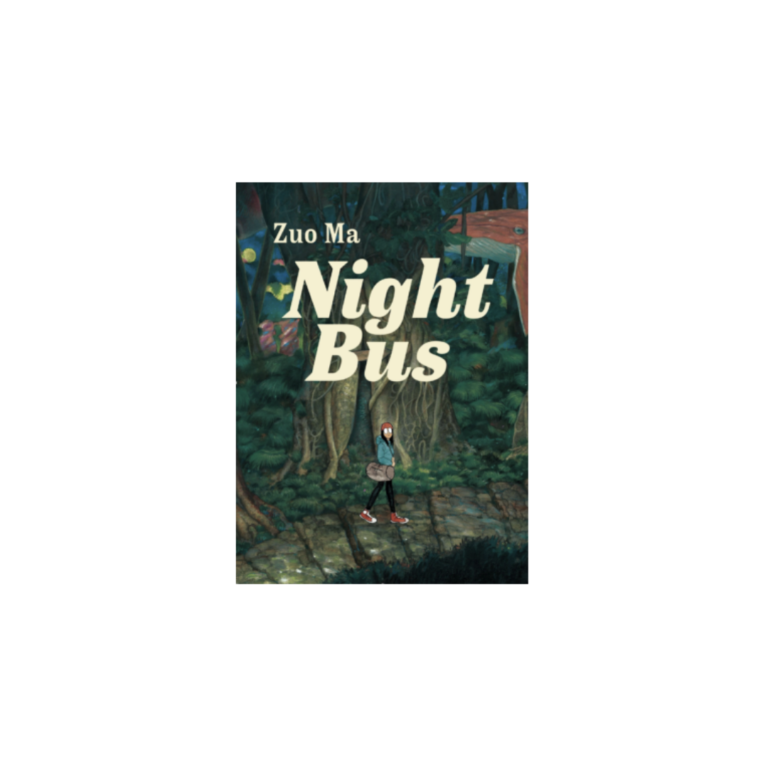Review of Night Bus
Drawn & Quarterly. 2021. 232 pages.
In Night Bus, Zuo Ma puts a surreal twist on autobiographical storytelling. The graphic novel is a series of imaginative short stories that connect to Ma’s real life. Timelines happen alongside each other, dreams seamlessly flow with reality, plants and wildlife overtake urban settings in unnatural ways. Ma’s writing style feels like reading someone’s personal memories. Memories don’t always bend to reality, and our lives intermingle with our dreams.
One story titled “Niu Niu The Evil Hound” depicts a tiny lap dog wearing a vest that watches a horror movie about an evil cat. Later at the market, he sees a chicken killing another chicken to sell, and he also loses his class pet. The story ends with him committing an act of violence. Despite its strangeness, this story is about Ma’s childhood dog. Like the rest of the stories in this collection, Ma uses fantasy as a form of self-expression to retell numerous events about his life.
In Night Bus, there’s an important duality between nature and urban settings. When characters are either young or reminiscing about the past, they are surrounded by nature. While the adults or those worried about their futures are within urban settings. Sometimes adult worries are interrupted by the natural world. One moment a character is concerned about future success, and in the next, they’ll be transported into a thick jungle. Ma seems to be suggesting that childhood and nature are interconnected. The wilderness is where imaginations become young again.
Along with childhood is the theme of memory, a few stories are about a grandmother who has lost her recent memories, leaving hers stuck in the past. An image or symbol that pops up in this novel repeatedly is a pair of glasses. Glasses are associated with intelligence and ageing. Glasses are also associated with perception and how one sees the world. Ma seems to suggest that wisdom grows with age; how our grandmothers are capable of seeing the world in ways that their grandchildren can’t yet. Although he romanticizes childhood, Ma also sees the value in growing old.
Climate change is never discussed directly in this graphic novel. However, in the story “Walking Alone,” a small hilly village is being torn down and flattened to make space for factories. Locals are concerned about adjusting from rural life to urban life. There is also concern about the natural spaces that will be lost. Climate change is often thought of as a global issue, a problem so large we can’t really see it. In this story, Ma reminds us that there are local issues in our own communities that we can focus on and that even the small changes matter.
The art in this graphic novel is black and white, with the occasional splash of a fully-coloured page or two interspersed. This feels reminiscent of times when you have a moment of clarity, and the world looks bright and brand new. This is the effect Ma pulls off with these pages of colour. The illustrations, even those in black and white, are so detailed. Ma expresses intense emotions through his use of harsh shadows and bold lines. From dead pig heads to the whole galaxy, everything is drawn with the same importance.
This book, at times, is too personal to be interesting, similar to when you get bored listening to a friend explain the dream they had last night. But the overarching themes of childhood and memories are so universal that I found myself relating to these bizarre stories anyway. If you can get past the need for structure, this is an enjoyable read that will have you looking under rocks like a kid again.

